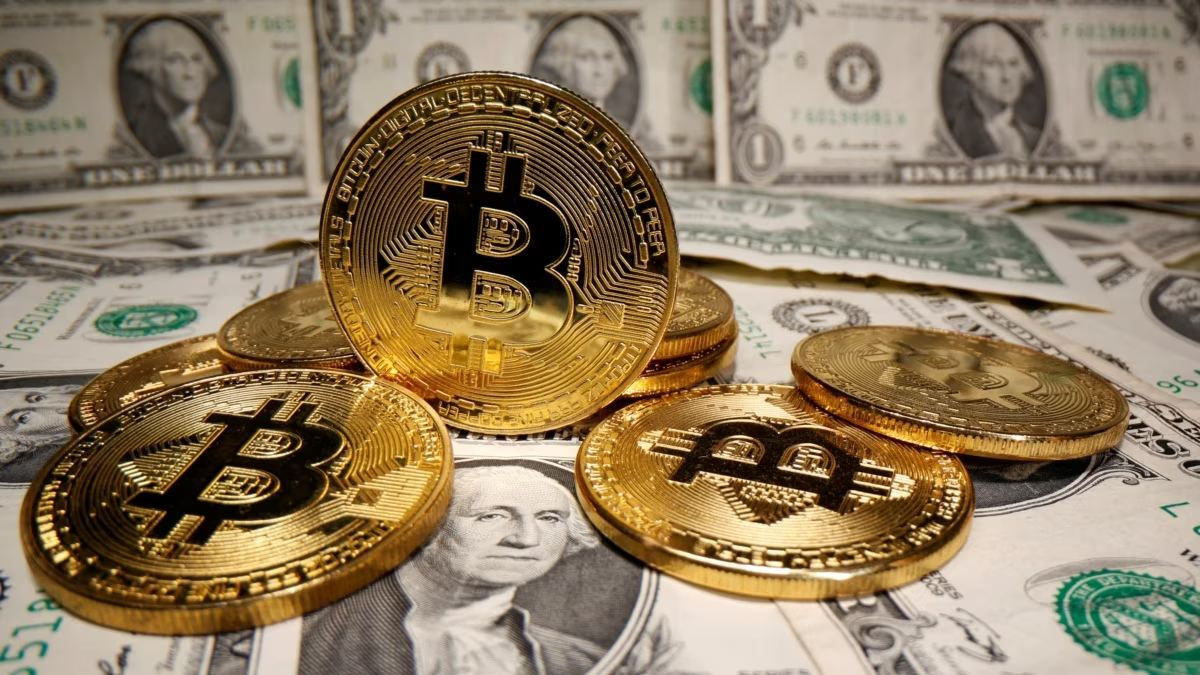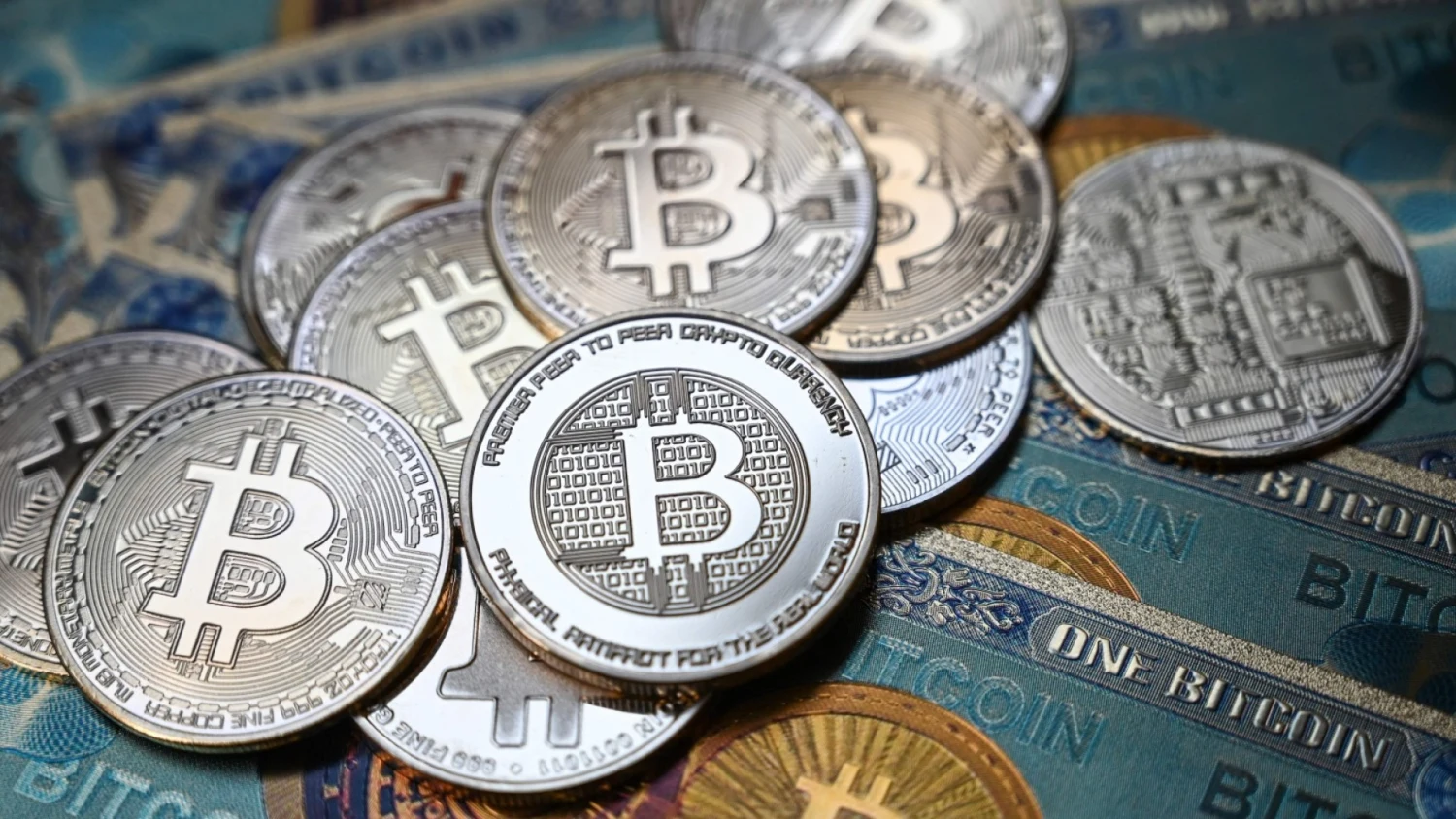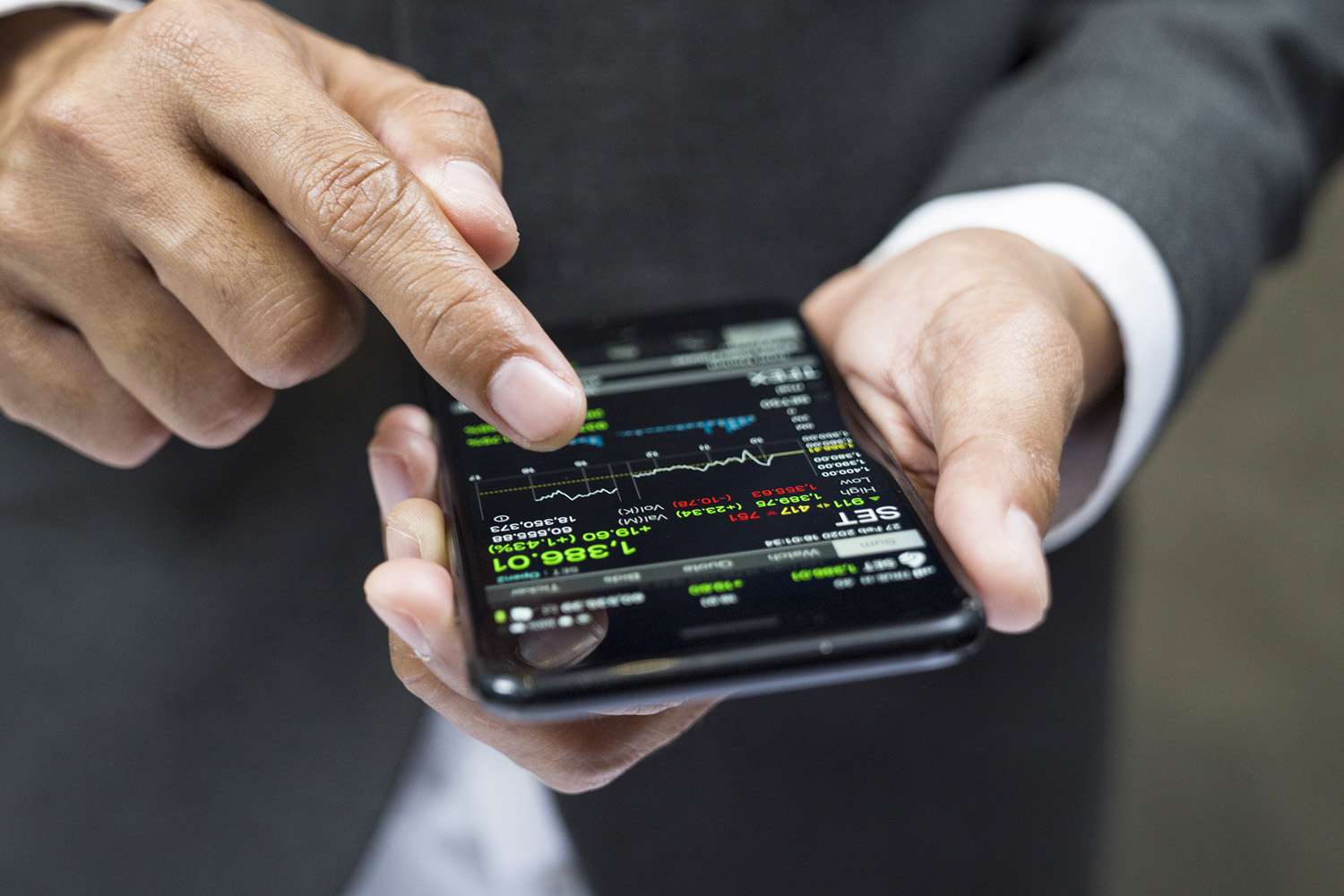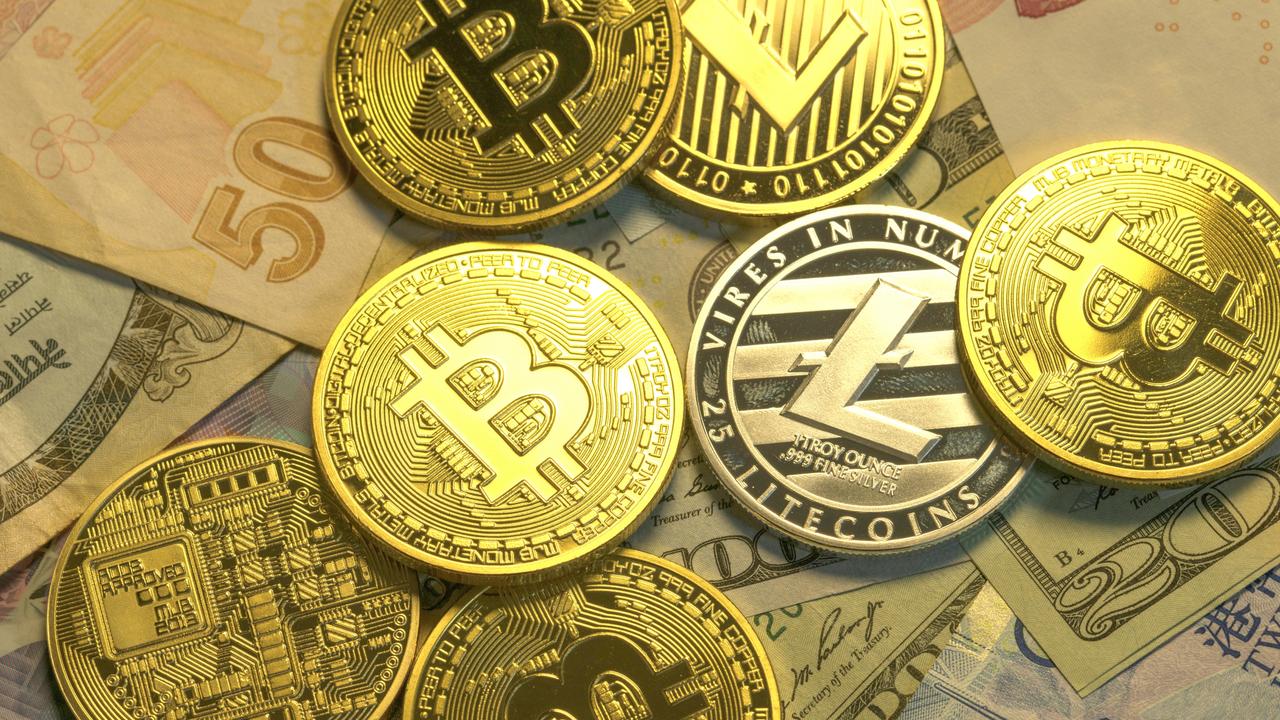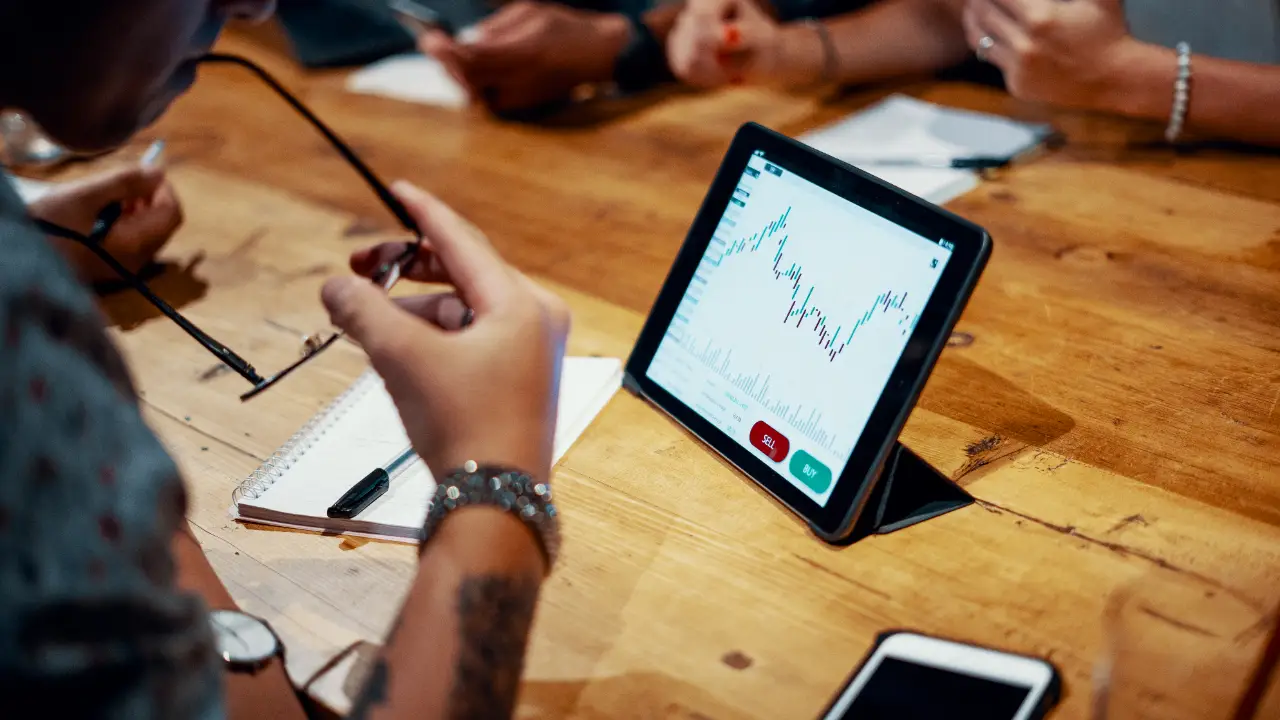What is Digital Currency?
Digital currency, also known as cryptocurrency, is a form of virtual or digital money that is secured using cryptography. Unlike traditional forms of currency, such as cash or credit cards, digital currency exists purely in electronic form and is decentralized, meaning it is not controlled or regulated by any central authority, such as a government or financial institution.
One of the key features of digital currency is its use of blockchain technology. A blockchain is a distributed ledger that records all transactions made with the digital currency. This technology ensures transparency and security, as each transaction is verified and encrypted by multiple computers, making it extremely difficult to tamper with the records.
One of the most well-known digital currencies is Bitcoin, which was created in 2009. Bitcoin introduced the concept of a decentralized digital currency and remains the most widely used and recognized cryptocurrency. However, there are now thousands of different digital currencies available, each with its own unique features and purposes.
One of the main advantages of digital currency is its ability to facilitate fast and secure transactions globally. Unlike traditional banking systems, which can be slow and costly, digital currency allows for near-instantaneous transfers, making it ideal for international commerce and remittances.
Additionally, digital currency provides users with more control over their finances. With traditional banking systems, individuals do not have direct control over their funds, as banks can freeze accounts or impose restrictions. However, with digital currency, individuals have sole control over their funds, eliminating the need for intermediaries.
Overall, digital currency represents a revolutionary shift in the way we perceive and use money. Its decentralized nature, combined with the security and speed of transactions, has the potential to transform various industries and improve financial inclusivity on a global scale.
The Benefits of Using Digital Currency
There are several benefits associated with using digital currency, making it an attractive option for individuals and businesses alike. Let’s explore some of these advantages:
- Security: Digital currency transactions are highly secure due to the cryptographic technology used to protect them. The use of blockchain ensures that transactions are transparent, immutable, and resistant to fraud and hacking attempts.
- Global Accessibility: Digital currencies provide individuals with access to financial services regardless of their location. As long as someone has an internet connection, they can participate in transactions and store their wealth using digital currency.
- Speed and Efficiency: Digital currency transactions are typically faster compared to traditional banking methods, which can involve lengthy processing times. With digital currencies, payments can be made instantly, reducing the need for intermediaries and streamlining the transfer of funds.
- Lower Transaction Fees: Traditional financial transactions often involve various fees, such as currency conversion fees and transaction fees imposed by intermediaries. Digital currencies can significantly reduce or eliminate these fees, making transactions more cost-effective.
- Financial Inclusion: Digital currencies have the potential to increase financial inclusion by providing access to banking services for individuals who are unbanked or underbanked. With a smartphone or computer, anyone can create a digital wallet and participate in the digital economy.
- Privacy: Digital currencies offer a level of privacy that is difficult to achieve with traditional banking systems. While transactions are recorded on the blockchain, personal information is kept confidential, enhancing the privacy of individuals’ financial activities.
- Investment Opportunities: Digital currencies have gained popularity as investment assets. Many people see digital currencies as a hedge against inflation and traditional investment assets. Investing in digital currencies can provide diversification and potential financial growth.
- Microtransactions: Digital currencies allow for microtransactions, enabling people to make small payments easily. This feature is particularly beneficial for content creators, as they can monetize their work on platforms that support digital currencies.
- Disintermediation: Digital currencies eliminate the need for intermediaries, such as banks or payment processors, in financial transactions. This decentralization empowers individuals, reducing dependency on centralized institutions.
With these advantages, it’s no surprise that digital currencies are gaining popularity and transforming the way we think about money and finance.
Common Types of Digital Currency
As digital currency continues to gain traction, various types of cryptocurrencies have emerged. While Bitcoin remains the most well-known digital currency, there are several other prominent cryptocurrencies in the market. Here are some of the common types:
- Bitcoin (BTC): Bitcoin is the first and most popular cryptocurrency, created by an anonymous person or group known as Satoshi Nakamoto. It operates on a decentralized network and has a limited supply of 21 million coins.
- Ethereum (ETH): Ethereum is a decentralized platform that enables the creation of smart contracts and decentralized applications (DApps). Ether (ETH) is the native cryptocurrency of the Ethereum network.
- Ripple (XRP): Ripple is both a digital payment protocol and a cryptocurrency. It aims to facilitate fast, low-cost international money transfers and has gained popularity among financial institutions.
- Litecoin (LTC): Launched in 2011, Litecoin is often referred to as the ‘silver’ to Bitcoin’s ‘gold.’ It offers faster transaction confirmation times and a different hashing algorithm, making it more accessible to everyday users.
- Bitcoin Cash (BCH): Bitcoin Cash is a cryptocurrency that emerged as a result of a hard fork from Bitcoin in 2017. It aims to address scalability issues and offers faster transaction speeds compared to Bitcoin.
- Cardano (ADA): Cardano is a blockchain platform that aims to provide a secure and sustainable platform for the development and execution of smart contracts. ADA is its native cryptocurrency.
- Stellar (XLM): Stellar is an open-source blockchain platform designed to facilitate fast cross-border transactions and enable easy integration with existing financial systems. The native cryptocurrency is Lumens (XLM).
- Monero (XMR): Monero is a privacy-focused cryptocurrency that uses unique techniques to ensure anonymity and untraceable transactions. It offers enhanced privacy and fungibility compared to other cryptocurrencies.
- Dash (DASH): Dash is a digital currency that focuses on transaction speed and privacy. It offers features like InstantSend for near-instant transactions and PrivateSend for enhanced privacy.
- NEO (NEO): NEO is often referred to as the ‘Chinese Ethereum’ and aims to be a platform for the development of decentralized applications and smart contracts. It is the native cryptocurrency of the NEO blockchain.
These are just a few examples of the wide range of digital currencies available today. Each cryptocurrency offers unique features, use cases, and benefits, catering to different user needs and preferences.
How to Get Started with Digital Currency
If you’re interested in getting started with digital currency, here are some steps to help you begin your journey:
- Educate Yourself: Start by educating yourself about digital currency and how it works. Research different cryptocurrencies, blockchain technology, and the basics of buying, storing, and using digital currencies. It’s important to have a good understanding of the concepts and risks involved.
- Choose a Reliable Exchange: Select a reputable cryptocurrency exchange to buy and sell digital currencies. Look for exchanges that have a good track record, user-friendly interface, strong security measures, and support for the digital currencies you are interested in.
- Create a Digital Wallet: Set up a digital wallet to securely store your digital currencies. There are different types of wallets to choose from, including hardware wallets, software wallets, and online wallets. Each has its own advantages and security features, so research and select the most suitable option for your needs.
- Complete the Verification Process: Many cryptocurrency exchanges require users to complete a verification process to comply with Know Your Customer (KYC) regulations. This process typically involves providing identification documents and proof of address. Once verified, you can proceed with buying and selling digital currencies.
- Start with a Small Investment: When you’re ready to purchase digital currencies, start with a small investment. Cryptocurrency markets can be volatile, so it’s advisable to start with an amount you’re comfortable with and gradually increase your investment as you gain more experience and confidence.
- Secure Your Investments: Implement security measures to protect your digital currency investments. Use strong and unique passwords, enable two-factor authentication (2FA), keep your wallet software up to date, and be cautious of phishing attempts or suspicious links. Consider offline or hardware wallets for additional security.
- Stay Informed: Stay updated on the latest news, trends, and developments in the cryptocurrency space. Follow reputable sources, join online communities, and engage in discussions to expand your knowledge and make informed decisions about your digital currency investments.
- Consider Dollar-Cost Averaging: Dollar-cost averaging is a strategy where you invest a fixed amount of money at regular intervals, regardless of the cryptocurrency’s price. This approach can help reduce the impact of market volatility and assist in building your digital currency portfolio over time.
- Be Mindful of Taxes: Remember that digital currency transactions may be subject to tax regulations in your jurisdiction. Keep track of your transactions and consult with a tax professional to ensure compliance with tax laws and requirements.
- Start Exploring: Once you have acquired some digital currency, start exploring its various uses. You can use it for online shopping, investments, or even sending money to family and friends. Experiment with different platforms and services that accept digital currencies to experience the full benefits of this modern form of money.
Remember, getting started with digital currency requires patience, research, and a willingness to learn. Take the time to understand the technology and its potential, and always exercise caution when making financial decisions in the digital currency space.
Using Digital Currency for Online Shopping
One of the practical applications of digital currency is its use for online shopping. As more and more businesses accept digital currencies as a form of payment, consumers have the opportunity to explore the benefits of using them for their online purchases. Here are some advantages and steps to consider when using digital currency for online shopping:
- Advantages of Using Digital Currency: Using digital currency for online shopping offers several advantages. It provides an extra layer of security by eliminating the need to share sensitive financial information during the transaction. Additionally, with digital currencies, you can make international purchases without worrying about currency conversion fees and processing delays.
- Find Online Merchants that Accept Digital Currency: Look for online stores and e-commerce platforms that accept digital currencies as a payment option. Many large and small businesses now recognize the value of digital currencies and have integrated them into their payment systems. You can find lists and directories online that provide information about merchants accepting specific digital currencies.
- Select Your Digital Currency Wallet: Before making any purchases, make sure you have a digital currency wallet to store your funds. Different online wallets offer varying features, so choose one that suits your needs in terms of security, ease of use, and compatibility with the digital currencies you plan to use.
- Load Your Wallet: Add funds to your digital currency wallet by purchasing digital currencies from an exchange or transferring them from another wallet. Take note of any transaction fees and ensure that you have sufficient funds to cover your intended purchases.
- Check Payment Options: Once you have selected the items you wish to purchase from the online merchant, proceed to checkout. Look for the payment options and choose the digital currency option, if available. The merchant may provide a wallet address or a QR code for you to send the payment to.
- Confirm and Complete the Transaction: Enter the requested amount of digital currency and review the transaction details for accuracy. Ensure that the wallet address or QR code matches the information provided by the merchant. Once you have double-checked everything, confirm the transaction and wait for the payment to be processed.
- Monitor the Transaction Status: After making the payment, monitor the transaction status on the blockchain. Most digital currencies have explorers or trackers that allow you to track the progress of your transaction. Be patient, as the transaction confirmation time may vary depending on the digital currency being used.
- Keep Records: It’s important to keep records of your online shopping transactions made with digital currency, including the date, merchant name, item description, and the amount spent in both fiat currency and digital currency. These records will be useful for future reference and for accounting or tax purposes.
- Stay Vigilant: As with any online transactions, it’s crucial to remain vigilant and ensure the security of your digital currency holdings. Beware of scams, phishing attempts, and only make purchases from reputable and trusted online merchants.
- Enjoy the Benefits: By using digital currency for online shopping, you can experience the advantages of fast, secure, and borderless transactions. Embrace the convenience and potential cost savings that digital currencies offer, as well as the novelty of being part of the growing digital economy.
Remember to always assess the security and credibility of the online merchant before making a purchase. With caution and proper research, using digital currency for online shopping can enhance your shopping experience and provide you with greater financial control and privacy.
Investing in Digital Currency
Investing in digital currency has gained significant attention in recent years, with many individuals looking to capitalize on the potential growth and opportunities in the market. Here is some information and guidance to consider when investing in digital currency:
- Research and Education: Before investing, educate yourself about digital currency and the various cryptocurrencies available. Understand the fundamentals, market trends, and factors that can influence the value of different digital currencies. Stay informed about news and developments in the cryptocurrency space.
- Choose the Right Digital Currencies: With the multitude of digital currencies available, it’s essential to choose the ones that align with your investment goals and risk tolerance. Consider factors such as the technology behind the currency, its market capitalization, liquidity, and the potential for future adoption and growth.
- Create a Diversified Portfolio: Building a diversified portfolio is crucial in any investment strategy, including digital currency. Invest in a variety of digital currencies to spread risk, rather than putting all your funds into a single currency. Diversification can help mitigate the impact of volatility in the market.
- Understand Risk and Volatility: Investing in digital currency comes with inherent risks due to its volatility and the relatively young nature of the market. Prices can fluctuate dramatically, and it’s important to be prepared for potential losses. Only invest what you can afford to lose and be patient in your investment strategy.
- Consider Dollar-Cost Averaging: Dollar-cost averaging is an investment strategy where you invest a fixed amount of money at regular intervals, regardless of the cryptocurrency’s price. This approach can help reduce the impact of market volatility and allows you to accumulate digital currencies over time.
- Choose a Secure Digital Wallet: Safeguard your investment by using a secure digital wallet to store your digital currencies. Look for reputable wallet providers that offer strong security features, such as two-factor authentication (2FA) and cold storage options. Protect your private keys and practice good security hygiene.
- Stay Informed and Analyze: Continuously monitor the market, industry trends, and news related to your investments. Utilize technical and fundamental analysis techniques to evaluate the potential value and growth prospects of digital currencies. Stay aware of regulatory changes and market sentiment that could impact the market.
- Consider Professional Advice: If you’re new to investing or unsure about navigating the complexities of the cryptocurrency market, consider seeking advice from professionals. Consult with financial advisors or experts who specialize in digital currency investments, as they can provide guidance tailored to your individual circumstances.
- Exercise Patience and Long-Term Thinking: Successful investing in digital currency requires patience and a long-term perspective. The market can be highly volatile, with both rapid growth and significant downturns. Avoid succumbing to short-term hype and focus on the long-term potential of your chosen digital currencies.
- Continuously Evaluate and Adapt: As with any investment, regularly evaluate and assess the performance of your digital currency portfolio. Rebalance your portfolio if necessary and stay adaptive to market conditions and emerging opportunities. Regularly review and update your investment strategy based on your financial goals and risk appetite.
Investing in digital currency can be an exciting and potentially profitable venture, but it’s important to approach it with caution, knowledge, and a long-term mindset. By staying informed, diversifying your portfolio, and practicing sound investment principles, you can potentially benefit from the growing opportunities in the digital currency market.
Paying Bills with Digital Currency
Digital currency has opened up new possibilities for making everyday financial transactions, including paying bills. Here are some key points to consider when using digital currency to pay your bills:
- Availability of Bill Payment Options: Check if the service providers or companies you need to pay bills to accept digital currency as a payment method. Find out if they have integrated digital currency payment systems or if there are third-party platforms that facilitate bill payments through digital currencies.
- Set Up Your Digital Wallet: Make sure you have a digital wallet that supports the digital currency you wish to use for bill payments. Ensure that the wallet is secure and easily accessible when needed. Different wallets may have unique features and compatibility with specific digital currencies.
- Connect Your Digital Wallet: Connect your digital wallet to the payment platform or service that allows bill payments with digital currency. Follow the instructions provided by the platform to integrate your wallet and authorize the necessary transactions.
- Link Your Billers: Add your billers to the payment platform or service. This step usually involves providing your account information or account numbers for each biller. Make sure to double-check the accuracy of the information to avoid any payment errors.
- Check Payment Options: Before initiating the payment, review the available payment options within the platform. Select the digital currency payment option and ensure that you have enough funds in your wallet to cover the bill amount.
- Verify Transaction Details: Carefully review the transaction details, including the biller, amount, and any fees associated with the payment. Confirm that the information is correct before proceeding with the payment.
- Initiate the Payment: Once you have verified the transaction details, initiate the payment by confirming the transaction in your digital wallet. The platform will typically generate a transaction ID or provide a confirmation message upon successful completion of the payment.
- Keep Records: Maintain proper records of your bill payments made with digital currency. Take note of the transaction ID, date, biller information, and amount paid in both fiat currency and digital currency. These records will be useful for future reference and for reconciling your bill payment history.
- Monitor Transaction Status: After completing the payment, monitor the transaction status on the blockchain or within your digital wallet. Depending on the digital currency used, transaction confirmations may take some time. Maintain patience while waiting for the payment to be recorded and confirmed on the blockchain.
- Stay Updated: Keep yourself informed about any changes in bill payment policies or new service providers that accept digital currency payments. Stay updated on the latest developments in the digital currency space to ensure you are using the most efficient and secure methods available.
Paying bills with digital currency provides convenience, security, and the potential for faster transactions. However, it’s important to ensure that your chosen payment platform or service is reputable, secure, and approved for bill payments. Always double-check the payment details and keep track of your transactions for accurate financial management.
Sending and Receiving Money with Digital Currency
Digital currency has revolutionized the way money is sent and received across the globe. Whether for personal or business purposes, using digital currency offers numerous benefits for efficient and secure transactions. Here are some key considerations when sending and receiving money with digital currency:
- Select a Suitable Digital Wallet: Choose a digital wallet that supports the digital currency you intend to send or receive. There are many wallet options available, including software wallets, hardware wallets, and online wallets. Research their features, security measures, and user-friendliness to make an informed decision.
- Obtain the Recipient’s Digital Wallet Address: When sending money, you need the recipient’s digital wallet address. This address is a unique identifier associated with their wallet and ensures that the funds are transferred to the right account. It is important to double-check the address to avoid any errors or accidental transfers.
- Specify the Amount and Currency: Determine the amount of digital currency you wish to send or receive. Consider factors such as fees and exchange rates if the transaction involves converting between different digital currencies or fiat currencies.
- Set the Transaction Fee: Digital currency transactions often involve a transaction fee. These fees can vary depending on factors such as network congestion and transaction speed. Decide on an appropriate transaction fee based on the urgency and priority of your transaction.
- Initiate the Transaction: Enter the recipient’s wallet address, specify the amount, and set the transaction fee in your digital wallet. Review the transaction details for accuracy, as digital currency transactions are irreversible once confirmed. Once satisfied, submit the transaction.
- Confirm the Transaction: After submitting the transaction, it enters the digital currency network for processing. Confirmation times can vary depending on network traffic and the digital currency being used. Monitor the transaction status in your wallet or the blockchain explorer to ensure its successful completion.
- Notify the Recipient: Inform the recipient that you have sent them digital currency. Provide them with the transaction details, including the transaction ID or hash, to help them locate and identify the transaction in their wallet. This step enhances transparency and facilitates smooth communication.
- Receiving Digital Currency: If you are the recipient, check your digital wallet to confirm the incoming funds. Verify that the transaction has been recorded in your wallet and review the transaction details to ensure its authenticity.
- Security Considerations: Protect the security of your digital currency transactions by using wallets with strong security features, such as two-factor authentication (2FA) and encryption. Keep your wallet software up to date and be cautious of phishing attempts or suspicious links that could compromise your funds.
- Keep Transaction Records: Maintain a record of your digital currency transactions, including the date, transaction ID, sender or recipient details, and the amount transacted. These records serve as a valuable reference for financial tracking, reporting, and reconciliation.
- Stay Informed and Adapt: Stay up to date with the latest developments and regulations in the digital currency space. Be aware of any changes that may affect the sending and receiving of money. Adapt your practices accordingly and adjust your transaction strategies if needed.
Sending and receiving money with digital currency offers speed, convenience, and security. However, it is crucial to double-check transaction details, ensure the security of your digital wallet, and stay informed about the evolving landscape to make the most of the benefits offered by digital currency.
Digital Currency Wallets and Security
When dealing with digital currency, ensuring the security of your funds is of utmost importance. Digital currency wallets play a vital role in protecting and managing your digital assets. Here are some key considerations regarding digital currency wallets and security:
- Types of Digital Currency Wallets: There are different types of digital currency wallets to choose from, each with its own advantages and security features. These include hardware wallets, software wallets, paper wallets, and online wallets. Research and select a wallet that aligns with your security needs and preferences.
- Security Features: Look for wallets that incorporate strong security features. These may include two-factor authentication (2FA), encryption, biometrics, and offline storage. The more robust the security measures, the better protected your digital currency will be.
- Keep Wallet Software Updated: Regularly update your digital wallet software to ensure you have the latest security patches and bug fixes. Developers often release updates to address vulnerabilities and improve overall security. Staying up to date will minimize the risk of potential security breaches.
- Secure Backups: Create secure backups of your wallet’s private keys or recovery phrases. These backups should be stored in multiple locations, such as encrypted external devices or offline storage (e.g., paper form). Be sure to keep them separate from your primary wallet to mitigate the risk of loss or theft.
- Protect Private Keys: Safeguard your private keys, as they provide access to your digital currency. Ensure they are stored securely and kept confidential. Avoid sharing your private keys with anyone and be cautious of phishing attempts or malicious actors seeking to obtain them.
- Utilize Two-Factor Authentication (2FA): Enable 2FA whenever possible to add an extra layer of security to your digital wallet. This typically involves using a second device or application to verify your identity when accessing your wallet or performing transactions.
- Be Wary of Phishing Attempts: Be cautious of phishing attempts, which involve fraudulent emails, messages, or websites designed to trick users into revealing their wallet credentials. Verify the legitimacy of communication and only enter your wallet information on trusted and secure platforms.
- Secure Internet Connectivity: When accessing your digital wallet, ensure that you have a secure internet connection. Avoid using public Wi-Fi networks, as they may be susceptible to hacking or eavesdropping. Consider utilizing a virtual private network (VPN) to encrypt your internet traffic.
- Regularly Monitor Transactions: Keep an eye on your digital wallet transactions to detect any unauthorized activity. Set up notifications or alerts to receive real-time updates on incoming and outgoing transactions. Any suspicious or unfamiliar transactions should be investigated promptly.
- Exercise Caution with Third-Party Wallets and Services: If using a third-party wallet or service, conduct thorough research to ensure its legitimacy and security practices. Only choose reputable providers with a proven track record in the industry. Exercise caution and assess the security risks associated with using such services.
- Stay Informed about Security Best Practices: Stay updated on the latest security best practices and emerging threats in the digital currency space. Follow reputable sources, participate in online communities, and engage in discussions to enhance your knowledge and awareness of digital currency wallet security.
Remember, securing your digital currency wallet is essential to protect your funds from potential threats. By selecting a secure wallet, employing best security practices, and staying informed, you can significantly enhance the security of your digital currency holdings.
The Future of Digital Currency
The concept of digital currency has already made a significant impact on the financial landscape, and its future holds immense potential for further transformation. Here are some key areas that shape the future of digital currency:
- Broader Adoption: Digital currency is gaining increasing acceptance and adoption across various industries. As more individuals, businesses, and even governments recognize the potential benefits, we can expect to see broader adoption and integration of digital currencies into everyday transactions.
- CBDCs and Central Bank Adoption: Central Bank Digital Currencies (CBDCs) have emerged as a topic of interest for many central banks worldwide. These digital currencies, issued and regulated by central banks, offer enhanced efficiency, transparency, and financial inclusion. We can expect to see more central banks exploring and experimenting with CBDCs in the future.
- Technological Advancements: As technology continues to evolve, so will the capabilities of digital currency. Innovation in areas such as blockchain, smart contracts, and scalability solutions will drive advancements in transaction speed, security, and functionality, opening up even more possibilities for digital currency applications.
- Financial Inclusion: Digital currencies have the potential to bridge the gap between the banked and unbanked populations worldwide. By providing access to financial services through mobile devices and the internet, digital currencies can empower communities that have limited access to traditional banking systems, promoting financial inclusion and economic growth.
- Improved Cross-Border Transactions: Digital currencies are particularly promising for cross-border transactions. With their borderless nature and fast transaction times, digital currencies can streamline international transactions, reducing costs, improving efficiency, and eliminating the need for traditional intermediaries.
- Integration with Internet of Things (IoT): The integration of digital currencies with the Internet of Things (IoT) will enable new possibilities for seamless machine-to-machine transactions. IoT devices can autonomously transact with each other and pay for services in real-time, creating a more interconnected and efficient digital economy.
- Regulatory Frameworks: As digital currencies continue to gain prominence, regulatory frameworks will likely evolve to provide clarity, consumer protection, and stability. Governments and regulatory bodies are expected to develop regulations and policies that balance innovation with safeguards against fraud, money laundering, and other illicit activities.
- Integration into Traditional Financial Systems: The integration of digital currency into traditional financial systems will play a significant role in shaping its future. As more financial institutions, payment processors, and investment firms embrace digital currencies, we can anticipate increased liquidity, accessibility, and integration into existing banking infrastructure.
- Increased Tokenization: Tokenization, the process of representing real-world assets as digital tokens on the blockchain, has the potential to revolutionize asset ownership and transfer. We may see the tokenization of assets such as real estate, art, and securities, enabling fractional ownership, enhanced liquidity, and new investment opportunities.
- Evolving Public Perception: Over time, public perception of digital currency is likely to evolve as its benefits become more evident and its risks are mitigated. As digital currency becomes more mainstream and integrated into everyday life, widespread acceptance and positive perception will further drive its adoption and development.
The future of digital currency holds immense promise for reshaping economic systems, financial services, and global transactions. As technology advances, regulatory frameworks mature, and public acceptance grows, digital currency will continue to redefine how we perceive, store, and exchange value in the digital age.







